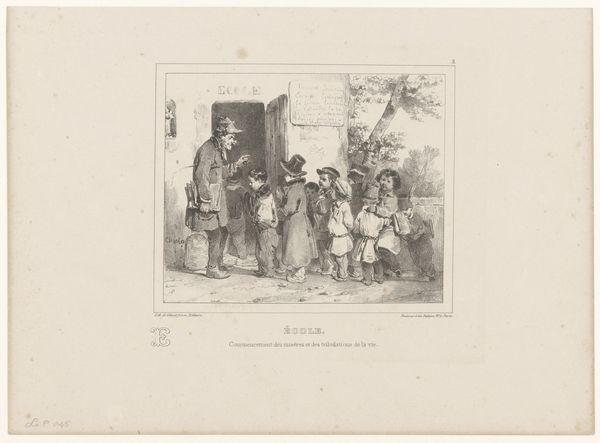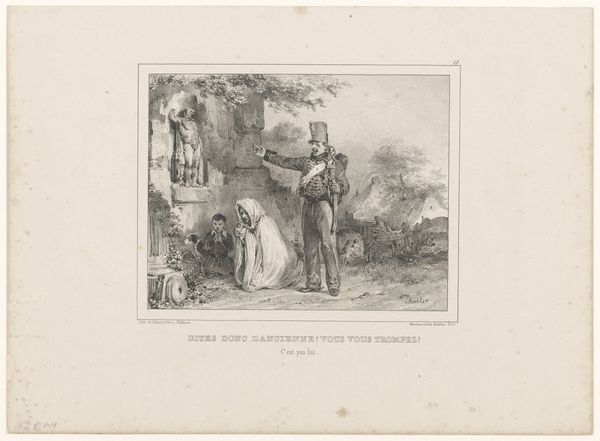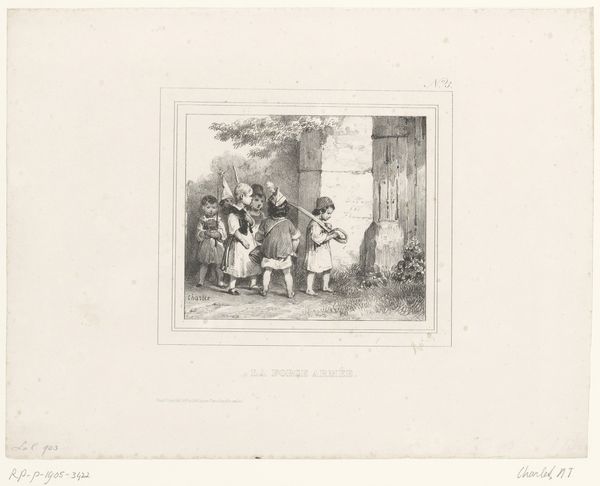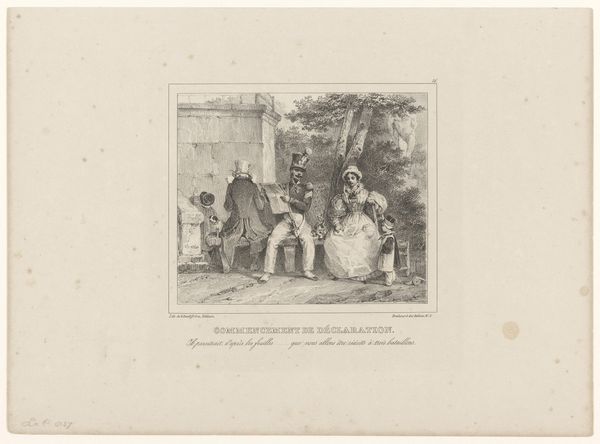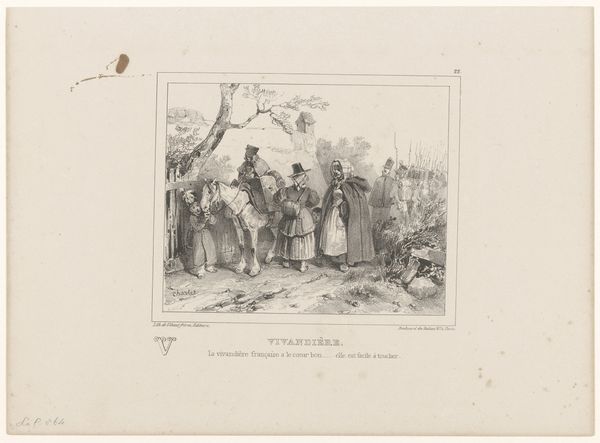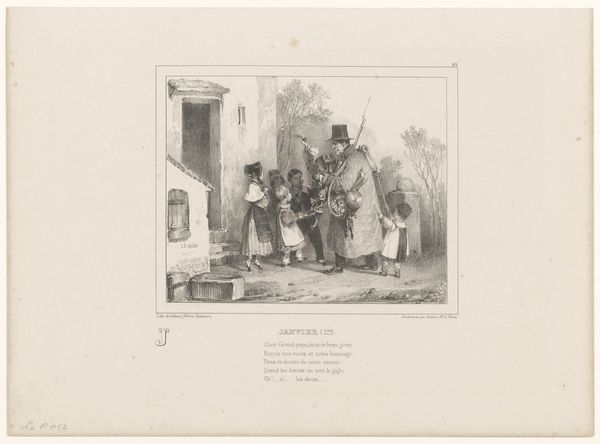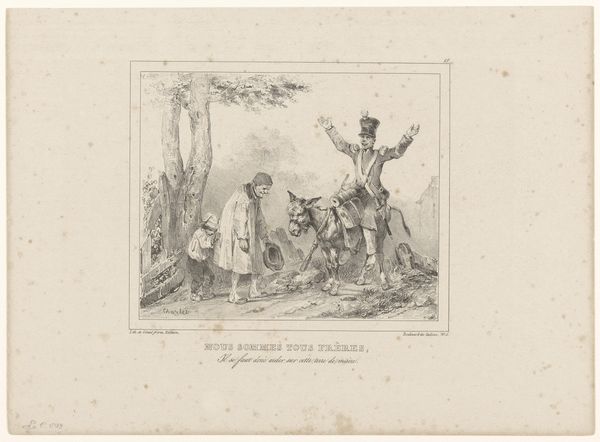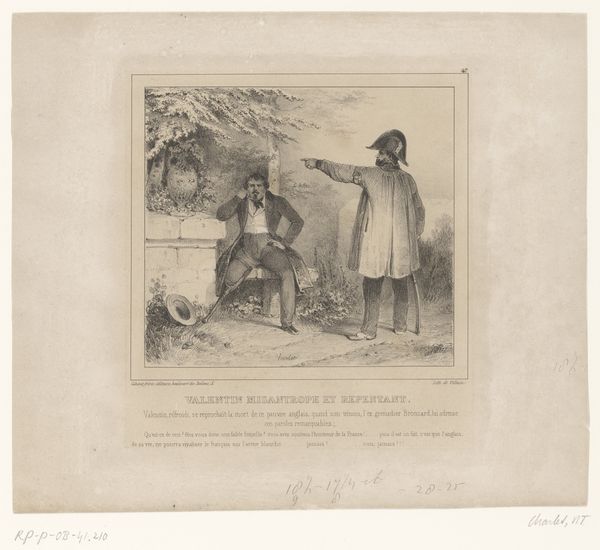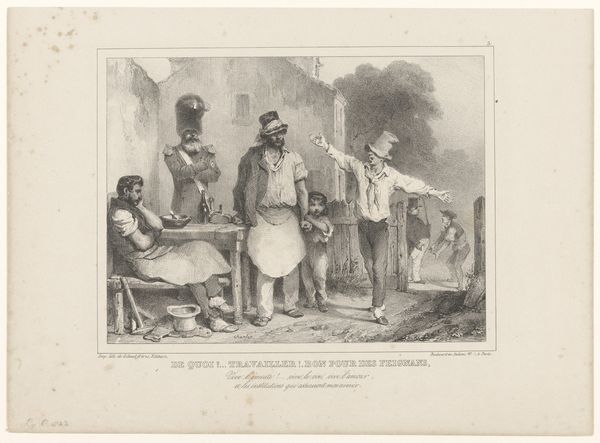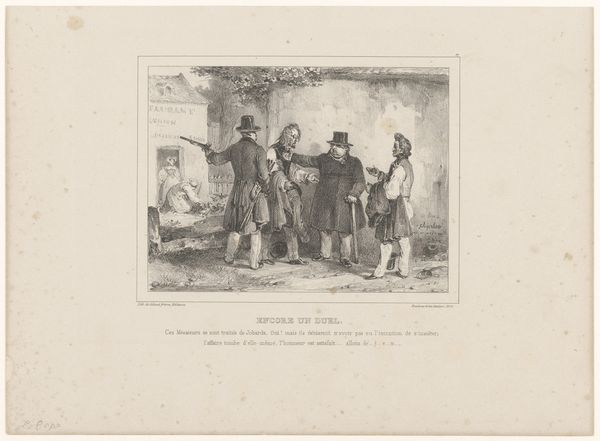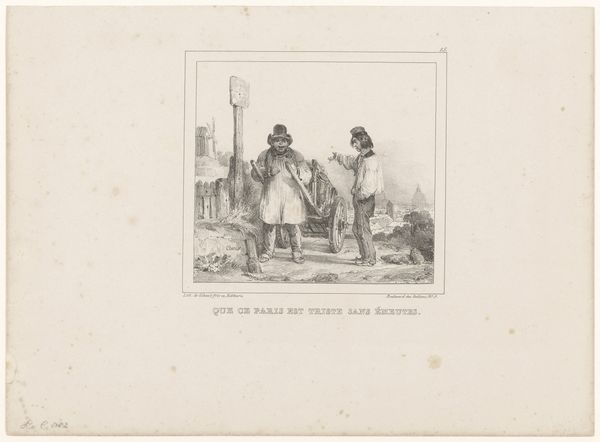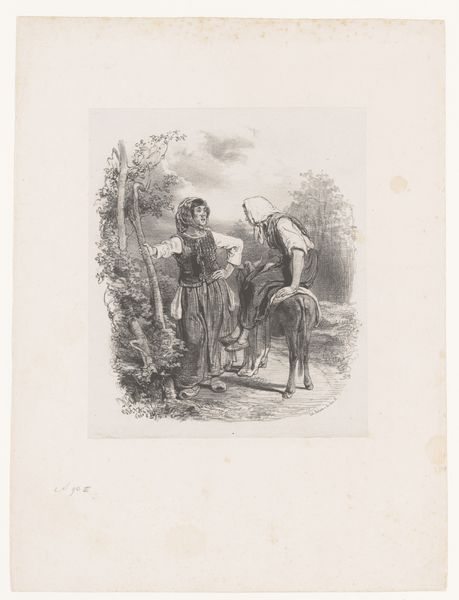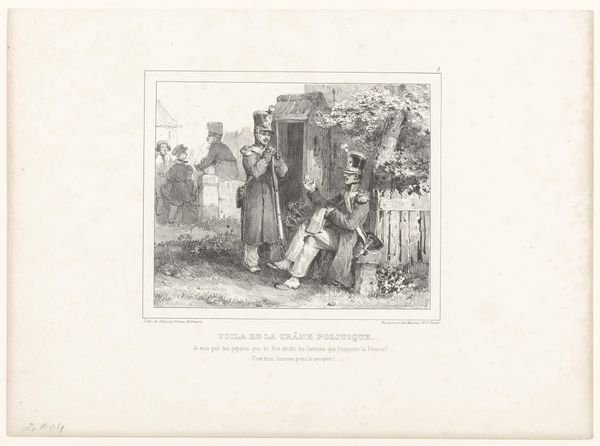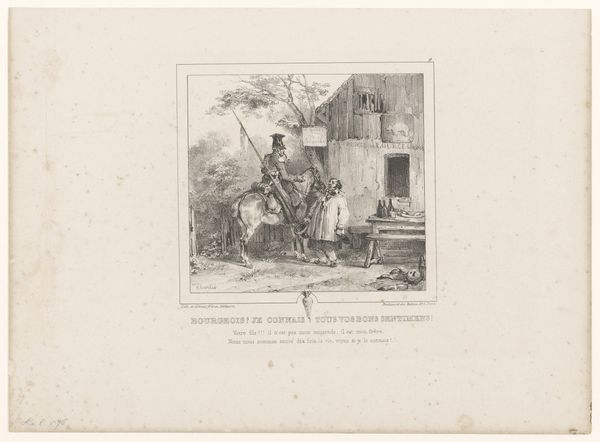
drawing, print, engraving
#
drawing
#
narrative-art
# print
#
old engraving style
#
romanticism
#
genre-painting
#
history-painting
#
engraving
Dimensions: height 247 mm, width 338 mm
Copyright: Rijks Museum: Open Domain
Editor: So this is Nicolas Toussaint Charlet's "Behoeftigheid," an engraving from 1835. It’s got this striking contrast between the old, poor man and the children. What stories do you see unfolding here? Curator: This image speaks volumes about social stratification in 19th-century Europe. The title "Behoeftigheid" translates to "Need" or "Poverty." How does the artwork depict the relationship between poverty and childhood, and what socio-political commentary might Charlet be making? Editor: Well, the children appear to be giving the old man money, so perhaps it’s commenting on the responsibility of the younger generation to care for the old? Curator: Exactly! And think about it historically: this was a period of massive social upheaval. The industrial revolution changed everything. Where do you think the artist positions himself regarding this change, looking at the figures and their relationship with one another? What about those outfits the children have? Editor: Maybe there’s a subtle critique of class differences at play? The children are well-dressed, suggesting a level of privilege juxtaposed with the man’s obvious poverty. It seems Charlet is using the sentimentality of Romanticism to engage with difficult socio-economic realities. Curator: Precisely. This image encapsulates how Romanticism could be used not just for idealized depictions of nature or heroism but also as a powerful tool to address social injustices. The sentimentality could be read as a conscious artistic decision intended to make the scene more effective. Editor: I see. It makes you wonder how the artist’s personal background and politics might have informed his decision to create such a piece. Curator: Yes, understanding the socio-political climate in France during the 1830s gives further context, enabling us to view art as an act of socio-political activism as well as historical documentation. What further questions does this raise for you regarding the relationship between art and society? Editor: I think it forces you to consider that even seemingly simple scenes can hold incredibly complex social critiques. Thank you. Curator: Absolutely. It's about understanding how artistic choices reflect broader societal issues.
Comments
No comments
Be the first to comment and join the conversation on the ultimate creative platform.
